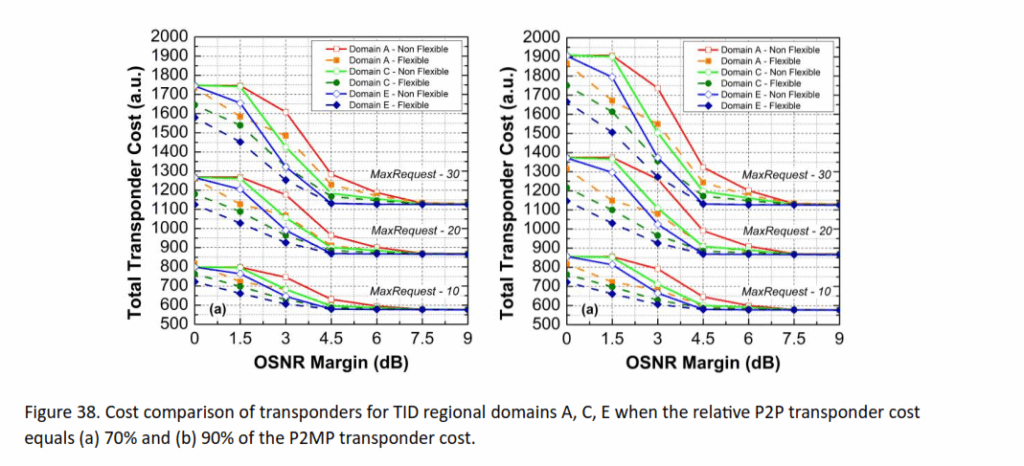In our latest implementation phase within the Allegro project, we focused on mitigating OSNR degradations in metro/regional domains that traditionally necessitate P2P (Point-to-Point) connections. While effective, P2P introduces latency due to O/E/O conversions and queuing delays — making it less desirable in scalable network architectures.
🚀 Enter Flexible Transponders.
We’ve adapted our approach by integrating transponders capable of dynamic modulation adjustment. When OSNR drops below defined thresholds, the transponders lower their modulation order. This enables long-distance leaves to be served via P2MP (Point-to-Multipoint) connections using a higher number of lower-rate subcarriers (SCs), minimizing the need for costly P2P paths.
🧠 To evaluate this architecture, we enhanced our heuristic algorithm to support multi-rate light-trees:
- Phase 1: Identify leaves that cannot be served via pure P2MP and connect them through regional roots using P2P.
- Phase 2: Focus on core-rooted trees, optimizing SC usage and consolidating connections.
📈 While P2MP costs may rise with more SCs, the reduction in P2P usage significantly offsets this, offering a balanced and scalable solution.
🔍 Our results suggest that flexible transponders present a compelling case — not only reducing cost but improving network adaptability without compromising performance.
#AllegroProject #FlexibleTransponders #P2MP #P2P #NetworkDesign #OpticalNetworking #TelecomInnovation #HeuristicOptimization

